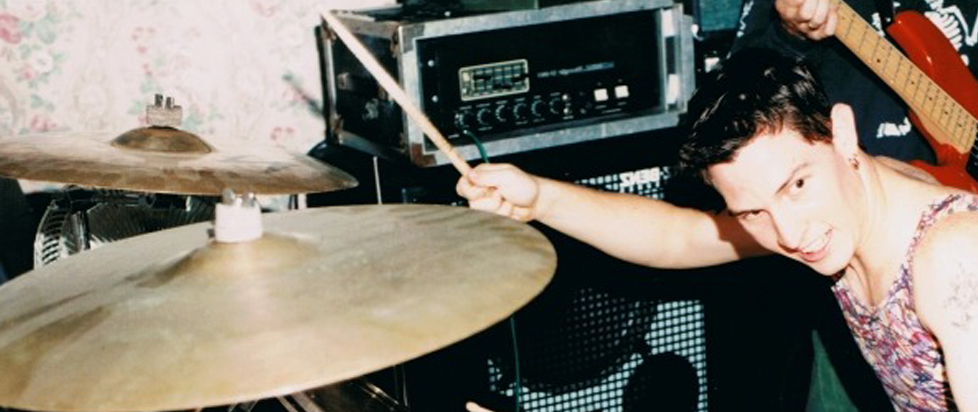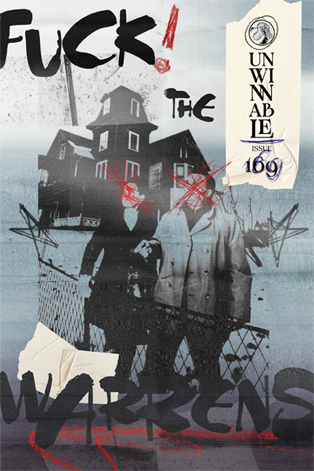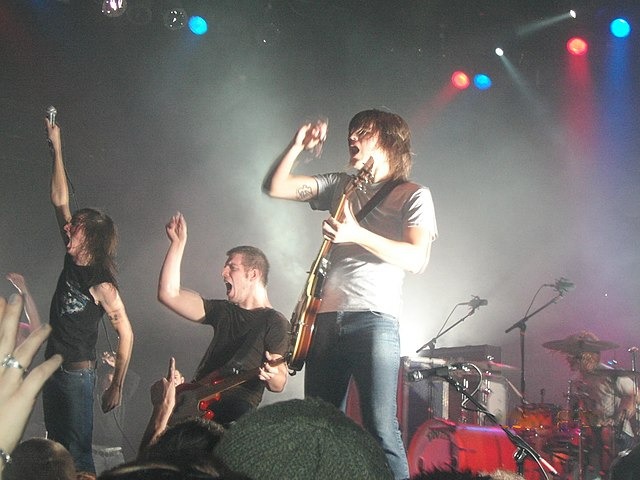
On the Outside Looking Into Christian Hardcore

This column is a reprint from Unwinnable Monthly #169. If you like what you see, grab the magazine for less than ten dollars, or subscribe and get all future magazines for half price.
———
Ruminations on the power of the riff.
———
During my early college years, Christian hardcore was nearly synonymous with hardcore itself. For context, I went to a small liberal arts school in the upper Midwest, an area that was once a hotbed for spirit-filled bands. They often shared stages (and floors) with secular bands, and even at shows with exclusively Christian lineups, the audiences were always mixed. I had a lot of personal misgivings with religion at the time, but I never thought twice about going to see heavy Christian bands. It was all just music, and I believed everyone belonged in the scene, regardless of religious affiliation.
I didn’t grow up in a church-going household, but I did have friends in middle school who were the sons of a pastor, and so I was exposed to plenty of Christian rock. I thought all of it was terrible and I wasn’t shy about saying so (even though it was the only music they were allowed to own, and in retrospect, I wish I had been more mindful of that fact). It gave me a look into an insular musical world that wasn’t accessible from the outside, one that claimed to be about ministering to the masses, but while mostly preaching to the choir.
I didn’t “get” Christian “rock” until I got into hardcore halfway through high school. The early waves of Christian hardcore bands were different. They weren’t universally awful, and they didn’t wall themselves off from the rest of the music industry. Starting in the early to mid-90s, bands like Embodyment, Living Sacrifice and Zao emerged from the underground and showed that Christian bands could match their secular peers in brutality and sincerity, rather than pushing second-rate product to a captive audience. While occasionally ostracized both by the church and the heavy music community, they ultimately won the battle to be taken seriously, and were instrumental in shaping metalcore’s evolution from VFW basements to the forefront of heavy music.

My listening rotation for much of my freshman year of college included a lot of those bands. Norma Jean and Underoath were ascending in popularity and seemed to influence every other band you’d see at all-ages shows. Labels like Solid State, Tooth and Nail, Facedown and Blood and Ink were at their peak. At the time, Christian hardcore was actively driving the growth of the hardcore scene in general, especially across the American Midwest and along the Bible Belt. It isn’t hyperbolic to say that metalcore would have evolved much differently without the Christian scene’s influence.
As happens with most trends, the early 2000s metalcore scene hit critical mass and became weighed down by copycat bands. Around the same time, most of my friends who were Christian either left the church, or at least became less hardline about their evangelicalism. Christianity, hardcore and Christian hardcore stopped being recurring points of conversation amongst my social circles. Eventually, something that once seemed like the exception (heavy and explicitly Christian music that wasn’t trash) had become so much the norm that I didn’t notice when it faded way.
Until recently, I never spent much time wondering what happened to the Christian hardcore bands that used to be so dominant when I was younger. Aside from long-running heavyweights like The Devil Wears Prada and August Burns Red – both bands that started to take off around the same time my tastes drifted elsewhere – I couldn’t name more than a couple current Christian metalcore bands. But as someone prone to going down musical rabbit holes, I was curious to find out how a movement that once seemed immovable had lost its perceived relevance, and so I turned to Google.
I had some assumptions about what led to the Christian scene’s retreat from mainstream visibility. The most obvious is that the specific subgenres of hardcore and metal that were most closely aligned with Christian bands went through a natural boom and bust cycle. As the scene started to attract trend-chasers, faith became a marketing tool, rather than a sincere expression of belief. As Few Left Standing drummer Jon Keegin told Christian culture magazine The Plough, “All of this stuff began when a bunch of working-class kids like us started bands in the service of ministry. But when it got big, the scene flooded with kids from the suburbs who used the appearance of ministry in service to their band. The fame took over.”

If you subtract the religious references, parts of this quote could describe the rise and fall of any movement in punk, hardcore or metal that ever emerged from the basement scene and gained mainstream acceptance (see also: nu-metal, emo, pop punk). Youth counter-culture movements change quickly, and by the time they hit the suburbs, there’s already something new looming on the horizon. This is the circle of life. But when trends are tied to convictions, moving on can be more complicated than simply changing the cut of your jeans.
In a video titled “What Killed Christian-Core,” The Punk Rock MBA host Finn McKenty (in a fair and even-handed way) points out that a lot of the bands that drove the Christian hardcore boom were in high school when they started their careers. They were born in church-going homes and likely got into heavy music through whatever CDs they could find at Christian bookstores. Some of those bands were clearly riding a gimmick as far as they could until the whole thing crashed. Yet others were just following the spiritual direction they were led in since childhood, not realizing they could choose their own music and beliefs. At least not until they reached actual adulthood.
When the Christian hardcore scene lost its grip on heavy music, I didn’t notice because I’d mostly outgrown the broader styles it was most closely associated with. There was never a moment where I decided I was done listening to music that carried a certain message or came from a specific belief system. But I also wasn’t brought up to exclusively listen to music that spread any specific message either, and as such, I never considered how the question of what happened to Christian hardcore could sound much different to someone who was raised within the faith. Nor had I fully considered that there is not one singular answer, but many different converging, complex personal experiences at the intersection between faith, commerce and the power of the riff.
———
Ben Sailer is a writer based out of Fargo, ND, where he survives the cold with his wife and dog. His writing also regularly appears in New Noise Magazine.




